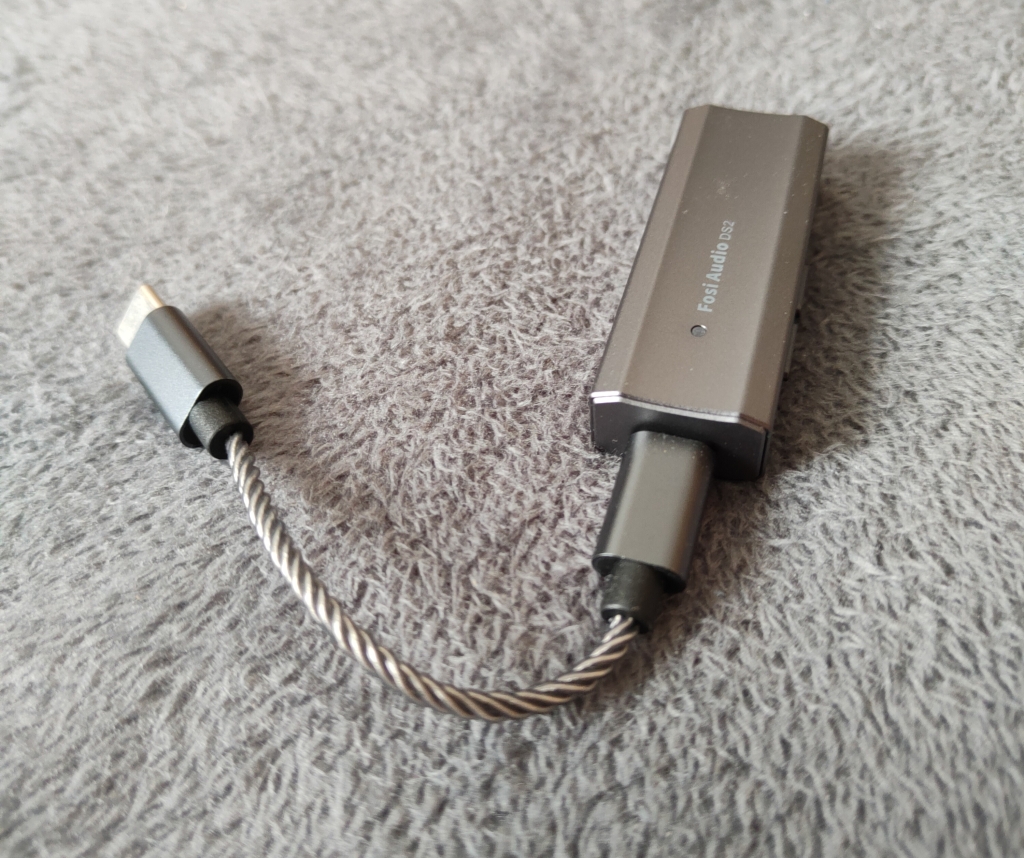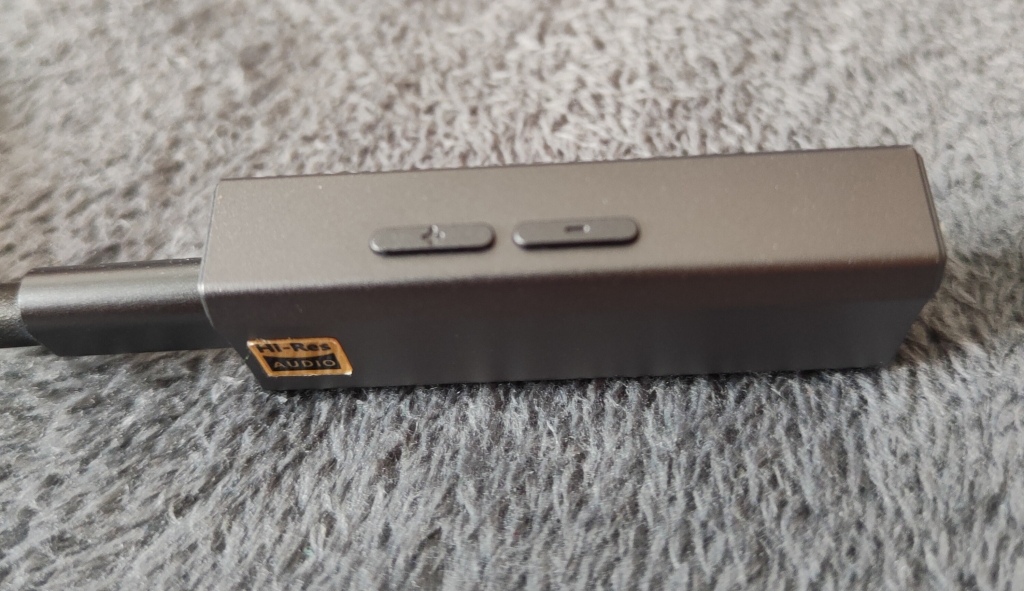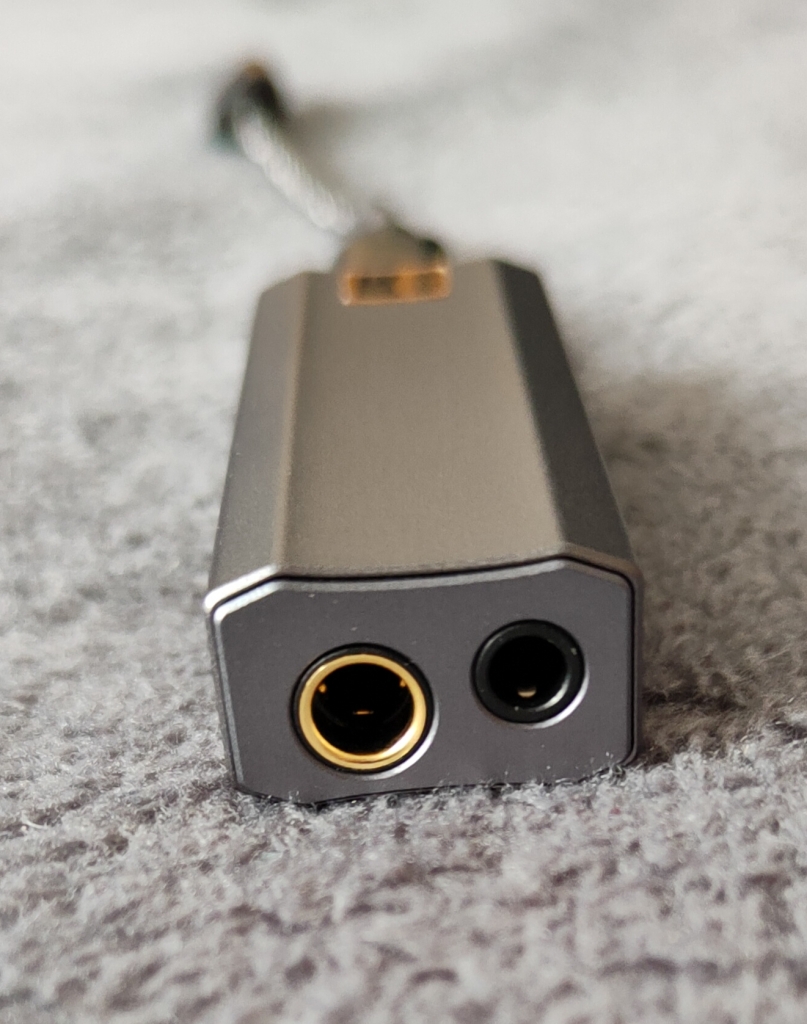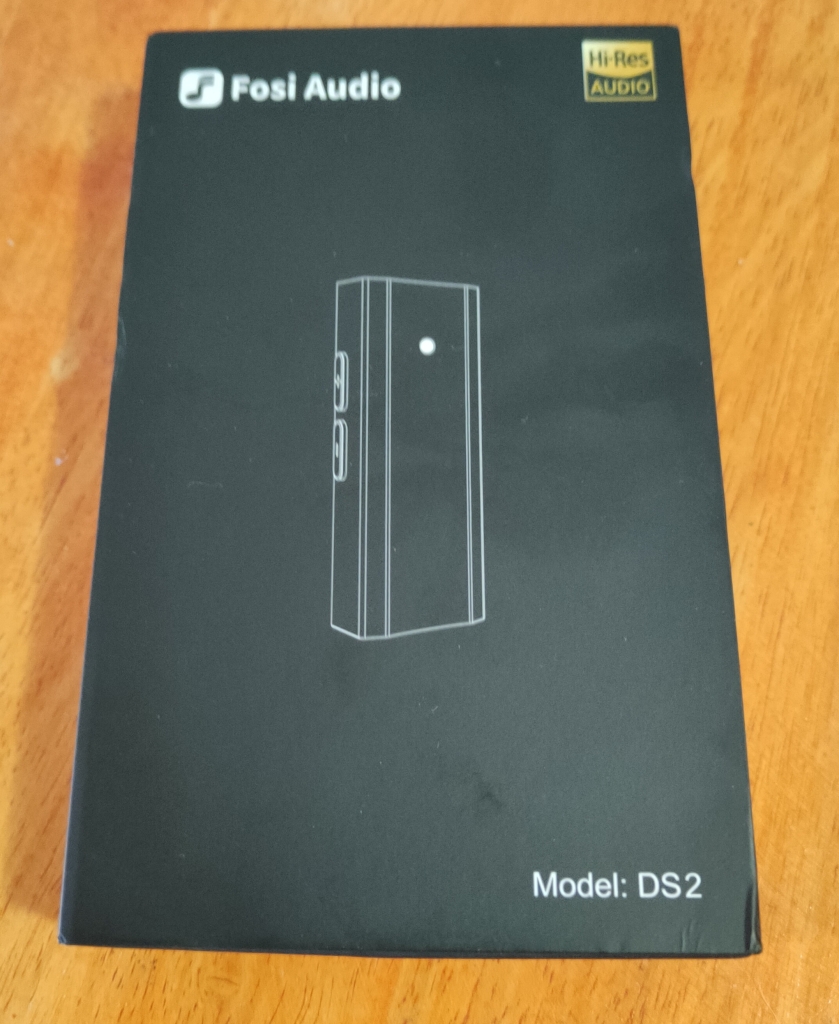 FOSI AUDIO
FOSI AUDIO is an audio company that quite reflects its solid reputation as an audio brand whose products offer exceptional sound quality, superb performance and good build quality at affordable price for budget-conscious audio enthusiasts. This audio company offers a variety of products from desktop preamps up to DAC/amp USB dongles. I actually publish some reviews of their products before and you can check it out at the end of this assessment

What I have here that will be featured here in this review content is their latest DAC/Amp USB dongle, The
FOSI AUDIO DS2. Like most DAC/Amp dongles that were available in the market, this device follows its usual form factor like elongated rectangular structure, a metal alloy chassis, type-C port and different types of audio jack interfaces.




As I mentioned that it has a metal alloy chassis, it seems that it underwent a CNC-milling process to achieve that uniform construction to have a firm and solid build with a sand-blasted finish on its surface in a gunmetal colour scheme to exude that premium-feel while maintaining a lightweight profile. Among the USB DAC/Amp dongles that I've tested, The
FOSI AUDIO DS2 is probably the most compact size with a good balanced weight on it.

In both ends, it has a USB type-C port while its opposite side, that's where the two types of headphone port interface are situated, the 3.5mm single ended and 4.4mm balanced output. On the side panel, there are volume key buttons for volume control which have independent functionality depending on a music player app's settings.



At the top panel, there's a RGB LED indicator for sampling rate and type of digital audio format.

Here are the following colour-coded display:
| LED DISPLAY COLOUR | DIGITAL AUDIO FORMAT | SAMPLE RATE |
| Red | PCM | under 48KHz |
| Green | PCM | 48-96KHz |
| Yellow | PCM | 96-384KHz |
| Blue | DSD | DSD64/128/256 |
Regarding its internals, it uses an older generation of
Cirrus Logic, the
CS43131 in a dual configuration. This DAC/Amp is a 32-bit 2-channel audio DAC that can decode up to 384KHz sampling rate on PCM and DSD256 on DSD format which makes it a high performance audio chip. This particular audio chip is actually very reliable and very power efficient to deliver a hi-fi sound with low distortion, high signal-to-noise ratio and better dynamic range to deliver a clean, transparent and stable sound quality. The built-in amplifier of this IC has a maximum power output up to 2Vrms which is enough to drive some of the most power-demanding headphones out with an impedance of 600 ohms.

This device has a detachable type-c to type-c short cable and its wiring strands are twisted.
Regarding its product packaging,
FOSI AUDIO DS2 is very simple with meagre inclusions.

Here are some contents inside of its packaging box:
- FOSI AUDIO DS2 dongle
- Type-C to type-C cable
- User's manual
- USB type-C to type-A adaptor




Regarding its hardware and software compatibility, this device can be used on devices such as smartphones, tablets, laptop and desktop. And for software, it can support both desktop and mobile operating systems.
Windows,
Mac OS and
Linux on desktop OS, and then
Android and
iOS on the mobile OS although in older iPhone models, you need a lightning to type-C cable. In
Android OS apps, there are few music player apps that can support USB audio access to bypass the android OS audio sampling like
Hiby Music App, UAPP (USB Audio Player Pro), Neutron App and Onkyo HF player.

As for its tonal profile, it seems that like almost all devices with
Cirrus Logic DACs, this device has a warmish-neutral sound that it has a tad textured lows and mid frequency and a rather linear high frequency which makes this set more appealing to audio enthusiasts who wants a more analogue-ish sound signature.
 LOWS/BASS:
LOWS/BASS:
This device is capable of delivering a well-defined punchiness, tactual and slamming bass response even if it was paired with more neutral-sounding sets with tighter and lightly thump bass, it can add some texture to it.
It can give a satisfying deep rumbling and reverberating sub-bass presence generated from instruments such as low tone bass guitar, bass violin, synthesisers and drum machines. It adds some density on note weight that might affect the tonal colour and characteristics on some instruments like bass trumpets, bass guitars, viola, bass clarinets, bass kick drum and a particular type of male voices like bass and bass-baritone vocals.
MIDRANGE:
The midrange quality of this one is quite well-textured as it has a hint of warmth that gives some depth and volume of vocals and instruments to sound at least more natural. Another thing that I also observe is that it has some transparency and a tinge of energy that will be more convenient on some female vocals, then a hint of crisp and brill on strings and woodwinds.
On male vocals, baritones have some smooth and plush sound while tenors have brassy and clear vocals. Countertenors have this opaque, coppery and tender vocals which share similar tonal characteristics with female mezzo-sopranos. Contraltos sounds almost correct on this one as it has a sufficient amount of richness and hefty on its vocal quality and then on sopranos, it has creamy and silvery that makes them even more captivating and mesmerising to listen to.
As for instruments, it sounds quite natural with a good amount of detail and clarity. On string instruments, there's a balanced to meaty sound on the guitars especially on the acoustic ones and a full and lustrous sound on violins. A rounded, full and intense sound on brasses like trumpets, trombones and horns. Then on woodwinds, it has a clear, rich, expressive and reedy sound on piccolos, flutes, clarinet and saxophones. As for percussive instruments, the tom-toms and field drums have a full, reverberant and warm sound, a hard and clattering sound on snare drums, and a resonant and rumbling sound on kettle drums. The piano sounds even and balanced as it has a bright and mellow tone with sufficient resonance.
HIGHS/TREBLE:
The treble quality that this device able to evince on my listening session, it has a smooth, evened and linear treble response with an unusually amount of sparkle and airy extension that most devices with
Cirrus Logic DACs that I've quite familiar with, this device is quite a peculiar one.
Somehow it gives a more lustrous and full sound on cymbals and a short buzz and sizzle sound on hi-hats. A sweet and velvety sound on celestas and a bell-like sound on glockenspiels.
OVERALL TECHNICALITIES:
This device is able to project a fairly spacious soundscape with excellent height and depth that pairing it with warm-sounding sets gives that immersive and intimate feel but on IEMs and headphones with superb technical performance, it narrows a bit on the perceived distance. It still has an excellent layering on the placement of instruments and vocals with good separation on each element in a black sonic canvas.
In terms of resolution capabilities, this device is quite resolving on both macro-dynamics and micro-dynamics. It has a solid and firm texture on its dynamics as it has a proper compression while it has a good micro-detail retrieval as it is able to pick up on some subtleties like vocal ends, spatial reverberations and distinctive nuances of different instrument attacks.
PEER COMPARISONS:
TRUTHEAR SHIO
- This USB DAC/Amp dongle, like the DS2 is also equipped with Cirrus logic amp albeit a newer generation, CS43198. Its size is a bit larger compared to DS2 and yet it has similar weight, its surface was covered with PU leather and unlike the DS2, it has manual gain switch mode by pressing between the volume key buttons.
- On the tonal aspect, it also has a warmish-neutral sound profile like the DS2. Both have slamming and tactile bass response, a tad warmth on the midrange and a slight emphasis on upper-mids up to the presence part to give a little bit of energy with good airy extension and sparkling sound. Both sets have eerily very similar technical performance like moderately spacious sound/speaker stage projection, well-defined layering and separation and remarkably resolving on their own right. Although, I think that SHIO still has a more powerful output that can drive most of the stubborn and power-hungry headphones that demand more juice.
EPZ TP20 PRO
- Another dongle with Cirrus logic DAC with the same model IC. It has a broader frame compared to the DS2 as it is also carbon-fibre cover on the top and bottom panel. In additional features, it has a toggle switch and additional button key for pause and play function. And also, its stock cable is quite thicker and even a bit longer and of better quality.
- The TP20 PRO is also of a warmish-neutral side of tonality as it exhibits similar sound profile with DS2 albeit its treble response seems to less emphasis on upper-mids and presence part to give that smoother, a less energetic with just enough sparkle and a noticeable modest airy extension. Both devices have very similar performance of technical abilities as it is almost impossible to differentiate the differences between these devices. It also appears that both sets have similar power output delivery but on paper, DS2's power output has a maximum rating of 510mw at 32 ohms at its balanced output jack.
In summary, this DAC/Amp dongle is quite a performer and
FOSI AUDIO continues to impress us on every release of their product. This DAC/Amp dongle shows that we can enjoy a high-fidelity sound quality in a compact and mobile form factor that it became more of a necessity for audio enthusiast like us given the removal of analogue features on most smartphone that deems “obsolete” for today's digital era according to these mobile phone companies (In which I'm still firm and adamant on disagreeing these notions). If you want a USB DAC/Amp dongle with some element of an analogue-ish tonal profile as it has a musical and fun factor that make it more engaging with competent technical capabilities, this might be the device that you are looking for.
FOSI AUDIO DS2 is now available in
HIFIGO, you can check out the unaffiliated link below.
★★FOSI AUDIO DS2 - HIFIGO★★
Also, you can check out my previous review article of
FOSI AUDIO products.
■ FOSI AUDIO MC101
■ FOSI AUDIO SK02

SPECIFICATIONS:
| Model | DS2 |
| Output Power | 128mW(SE); 510mW(BAL) |
| Terminating Impedance | 16~300Ω |
| Input Mode | USB Type C |
| Output Mode | 3.5MM + 4.4MM Headphone |
| Frequency Range | 20Hz-20kHz (±0.5dB) |
| THD | 0.0006%(32Ω SE); 0.001%(32Ω BAL) |
| SNR | ≥130dB |
| Sampling Rate | 32bit/768kHz |
| DSD | DSD64/128/256 |
| DAC Chip Set | Dual CS43131 |
| Material | Tin Alloy |
| Compatible Devices | Mac\Windos\IOS\Android |
| Device Weight | 15g |
MY TESTING TRACKS: ( * = 16-bit FLAC, ** = 24-bit FLAC, *'* = MQA, '*' = DSD, *'= .WAV)
Alison Krauss -When You Say Nothing At All *
Jade Wiedlin - Blue Kiss**
Led Zeppelin - When The Levee Breaks **
Mountain - Mississippi Queen *
Queen - Killer Queen **
Guns N' Roses - Patience *'*
Eric Clapton - Tears in Heaven '*'
Sergio Mendes- Never Gonna Let You Go '*'
Pearl Jam - Daughter **
Roselia - Hidamari Rhodonite *
Assassin - Fight (To Stop The Tyranny)*
Celtic Frost- Visual Aggression *
New Order - Blue Monday *
The Corrs- What Can I do (unplugged version) *
Jimi Hendrix Experience - Voodoo Child *
The Madness- Buggy Trousers *
Metallica - Motorbreath **
Mariah Carey- Always Be My Baby *
Destiny's Child - Say My Name *
Malice Mizer- Au Revoir *
Mozart - Lacrimosa *
New York Philharmonic Orchestra - Dvorak- Symphony 9 " From the New World." *
Eva Cassidy - Fields of Gold (Sting cover)*
Michael Jackson - Give In To Me *
Exciter - Violence and Force *
Diana Krall - Stop This World **
Debbie Gibson - Foolish Beat *'*
The Sisters of Mercy – Lucretia My Reflection**
Suzanne Vega – Luka **
Lauren Christy – Steep *
Ottoman Mehter - Hucum Marsi *
Diana Damrau - Mozart: Die Zauberflöte*
P.S.
I am not affiliated to FOSI AUDIO nor receive monetary incentives and financial gains as they provide me a review unit for an exchange of factual and sincere feedback from yours truly.
Once again, I would like to send my gratitude to HIFIGO especially to Ms. Lvy Yan for providing this review unit. I truly appreciate their generosity and trust towards me and other reviewers.


































